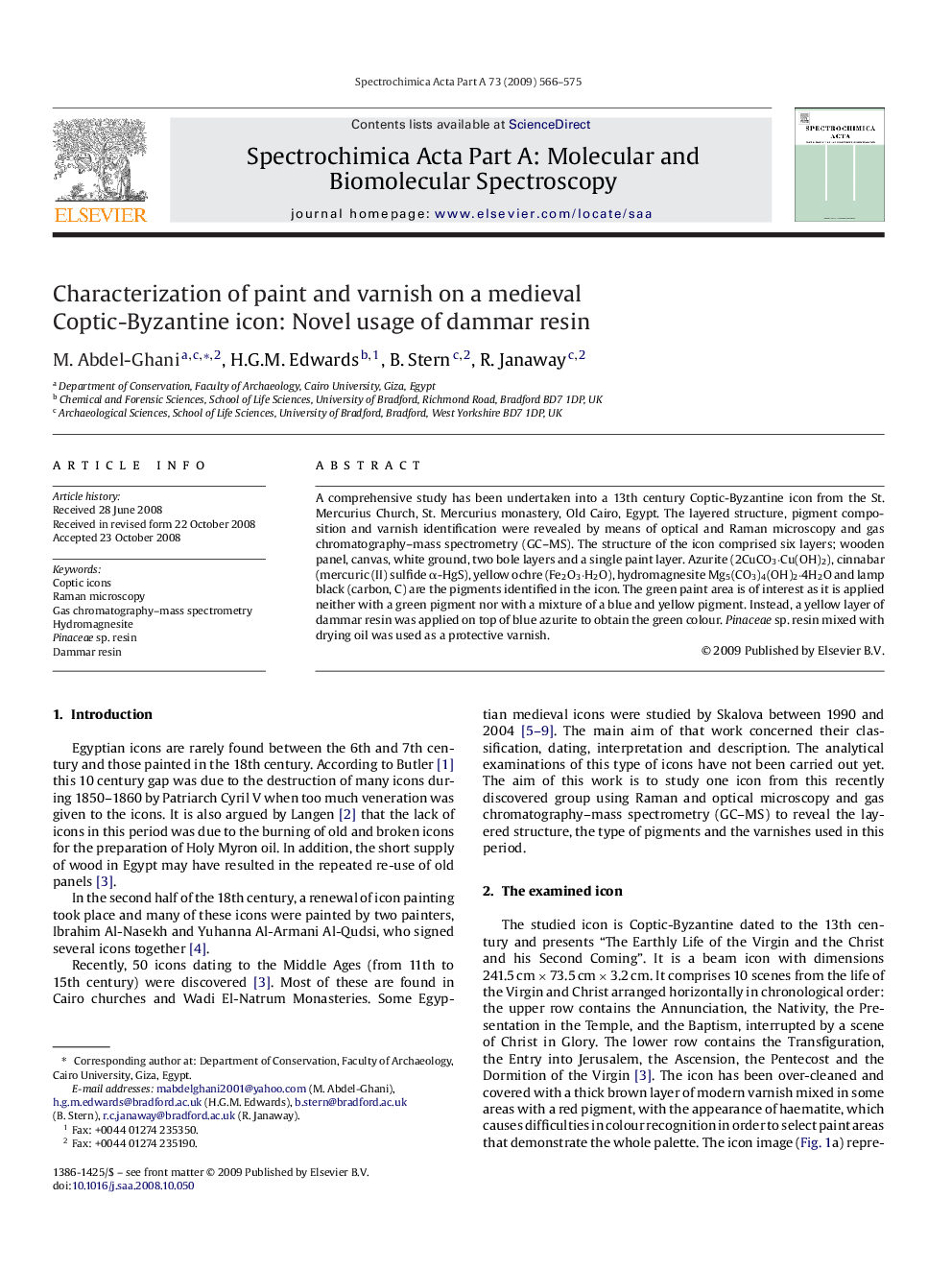| Article ID | Journal | Published Year | Pages | File Type |
|---|---|---|---|---|
| 1233366 | Spectrochimica Acta Part A: Molecular and Biomolecular Spectroscopy | 2009 | 10 Pages |
A comprehensive study has been undertaken into a 13th century Coptic-Byzantine icon from the St. Mercurius Church, St. Mercurius monastery, Old Cairo, Egypt. The layered structure, pigment composition and varnish identification were revealed by means of optical and Raman microscopy and gas chromatography–mass spectrometry (GC–MS). The structure of the icon comprised six layers; wooden panel, canvas, white ground, two bole layers and a single paint layer. Azurite (2CuCO3·Cu(OH)2), cinnabar (mercuric (II) sulfide α-HgS), yellow ochre (Fe2O3·H2O), hydromagnesite Mg5(CO3)4(OH)2·4H2O and lamp black (carbon, C) are the pigments identified in the icon. The green paint area is of interest as it is applied neither with a green pigment nor with a mixture of a blue and yellow pigment. Instead, a yellow layer of dammar resin was applied on top of blue azurite to obtain the green colour. Pinaceae sp. resin mixed with drying oil was used as a protective varnish.
